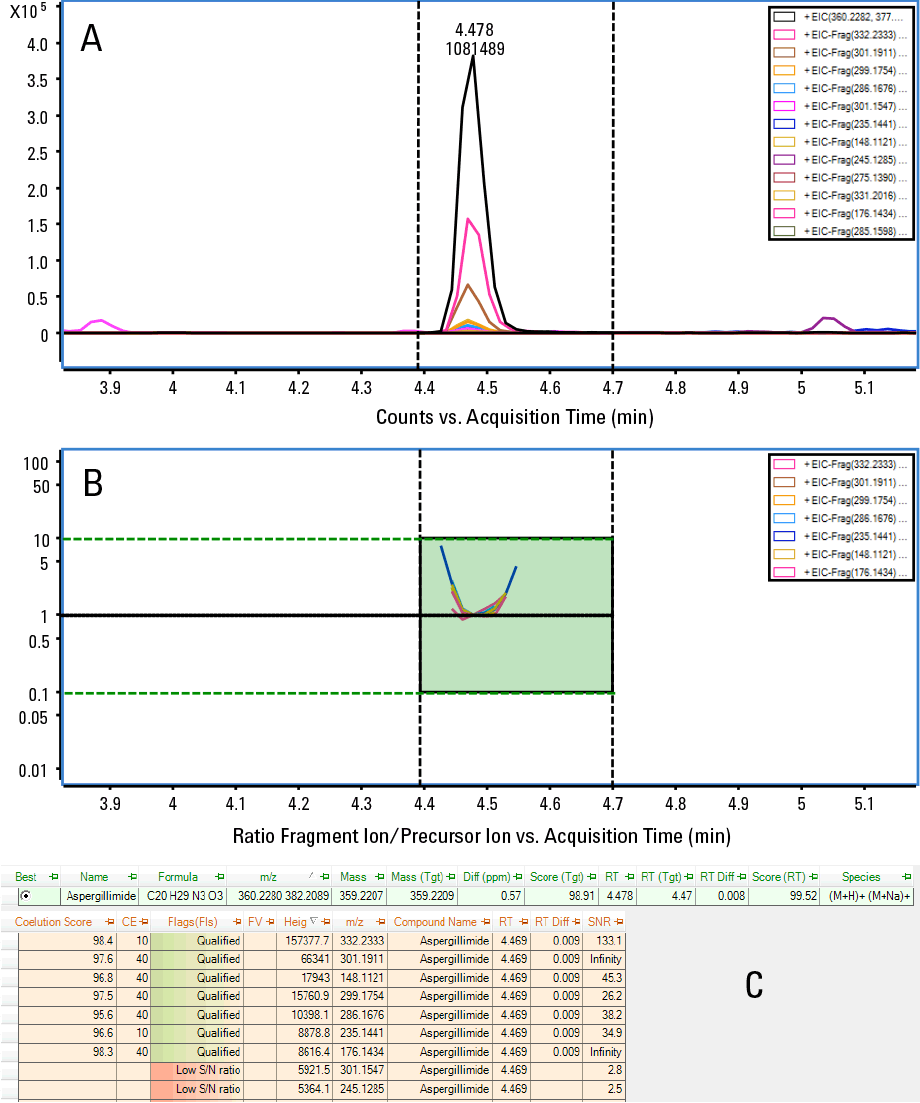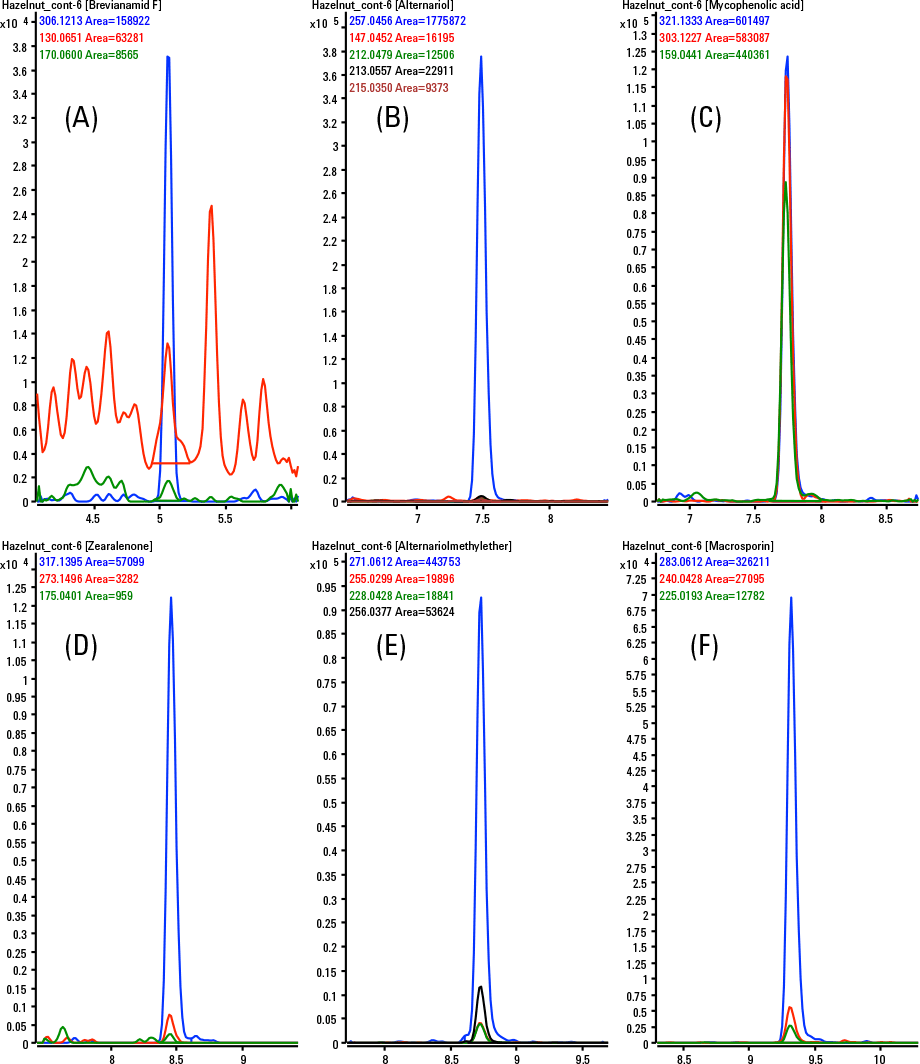Access Agilent eNewsletter June 2015
>> Update My Profile | Subscribe to Access Agilent | Article Directory
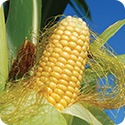
New mycotoxin PCDL from Agilent provides fast, easy screening and quantitation
By John Lee
Agilent Food Market Manager
Mycotoxins are secondary fungal metabolites, found in a range of food and animal feeds. Some are very dangerous, even carcinogenic. Although regulations cover several of the best-known mycotoxins, there is increasing interest in multi mycotoxin surveillance. Q-TOF mass spectrometry offers new possibilities to extend such surveillance because of its ability to deliver highly selective full scan analysis with accurate mass.
Mycotoxin screening provides challenges for analysts
Searching for more compounds by looking for their accurate masses in the full scan data is an effective strategy but when dealing with complex samples, harmless matrix compounds might be wrongly assigned. This can happen more often as the number of entries in the search increases.
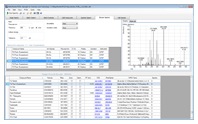 Enlarge
Enlarge
Figure 1. MassHunter PCDL Manager Software showing the exact mass spectrum for the [M+NH4]+ species of T-2 toxin at a collision energy of 10 eV.
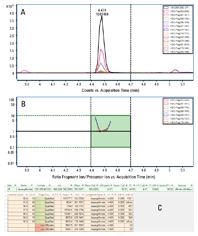 Enlarge
Enlarge
Figure 2. (A) All Ions overlay of the precursor chromatogram with the fragment chromatograms for aspergillimide in a spiked maize sample (B) coelution plot, (C) compound identification results including the coelution scoring.
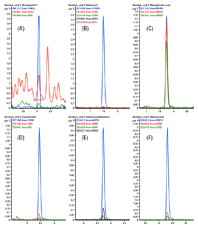 Enlarge
Enlarge
Figure 3. Chromatograms of mycotoxins detected in a naturally contaminated hazelnut sample. (A) brevianamid F (<LLOQ), (B) alternariol (310 µg/kg), (C) mycophenolic acid (6,100 µg/kg), (D) zearalenone (21 µg/kg), (E) alternariol monomethyl ether (220 µg/kg), and (F) macrosporin (520 µg/kg).
How does the Mycotoxin PCDL solve the problem?
- Quickly transforms your Q-TOF to a mycotoxin screener. You no longer need to decide on which compounds to look for – or to curate your own library. The new PCDL captures over 450 compounds – including mycotoxins, fungal metabolites, and bacterial metabolites relevant for molds found in food or the environment. The Mycotoxin PCDL contains 302 compounds with accurate mass spectra, for a total of over 1360 accurate mass library spectra for verification.
- Verify efficiently and easily. Mycotoxin PCDL loads inside Agilent MassHunter Workstation, becoming an integrated part of the search. Just run samples and press SEARCH.
- Simultaneous screening and quantitation. When you add a calibration for more common compounds, quantitation can be added to the screen. The Agilent 6550 iFunnel Q-TOF LC/MS is fast enough to collect the spectral information for verifications while delivering uninterrupted high-definition chromatographic data for quant, whether you use All Ions acquisition or full MS/MS.
Agilent solution aids in creation of comprehensive mycotoxins database
Accurate mass spectra of single-analyte solutions in target MS/MS mode were acquired for all relevant molecular ions including [M+H]+, [M-H]-, [M+NH4]+, and [M+CHOO]- for three collision energies. The data acquisition was performed by the Institute for Analytical Chemistry, IFA Tulln, near Vienna – made possible as a result of the large collection of isolates and standards accumulated by the lab over the last decade. The compound and spectral data were then curated and validated by Agilent.
Ions from MS/MS spectra were compared to theoretical fragment formulae and corrected to their theoretical masses. A spectral noise filter and minimum base peak threshold were also applied to ensure good ion statistics for all fragment ions. Figure 1 illustrates an entry in the resulting Mycotoxin PCDL.
All Ions MS/MS acquisition for simultaneous screening and verification
When analyzing food samples with the All Ions MS/MS workflow, an overlay is made of chromatograms for both precursor ion (low energy channel) and fragment ions (high energy channel) using the spectral information in the Mycotoxin PCDL. Coelution scoring (the score for how well a fragment ion coelutes with the precursor ion) is then used to verify a hit. This is shown in Figure 2A. In this example, using spiked maize sample, seven fragment chromatograms show coelution with the precursor ion, resulting in good scoring.
Real world example: detecting fungal metabolite contaminants in hazelnuts
The precursor and fragment information from All Ions MS/MS data can also be viewed in the Compounds-at-a-Glance feature in Agilent MassHunter software, from where concentration values can also be reported and compared to a calibration. Figure 3 shows six, naturally incurred contaminants in a hazelnut sample recently found at IFA Tulln.
Agilent solutions for mycotoxin detection and other applications
Full details of this Mycotoxin screening example can be found in Agilent publication 5991-5667EN. Other PCDL solutions available from Agilent include using Q-TOF for pesticides, veterinary drugs, and forensic and toxicology applications.
Agilent has many solutions to help you detect and identify biotoxins in food products. Explore our portfolio of sample prep, columns, and supplies for every part of your workflow. Additionally, Agilent offers a wide array of liquid chromatography and mass spectrometry solutions for busy labs. Contact an Agilent Representative today to find out how Agilent LC and MS solutions can provide quicker throughput, cost efficiencies, and greater accuracy.
>> Update My Profile | Subscribe to Access Agilent | Article Directory
Figure 1.
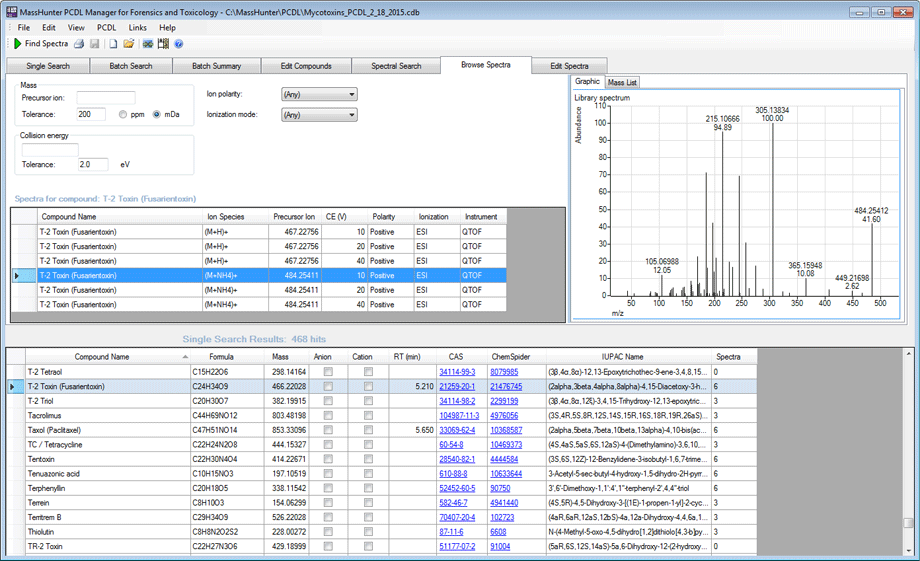
MassHunter PCDL Manager Software showing the exact mass spectrum for the [M+NH4]+ species of T-2 toxin at a collision energy of 10 eV.
